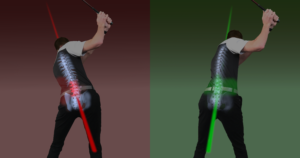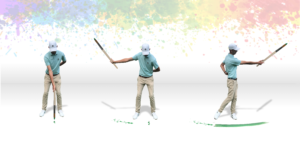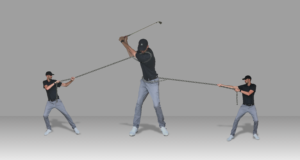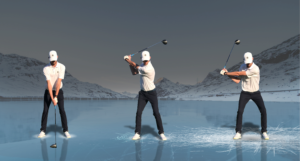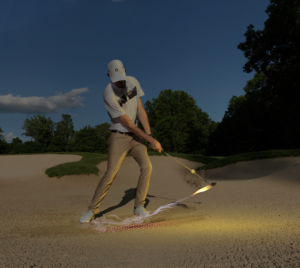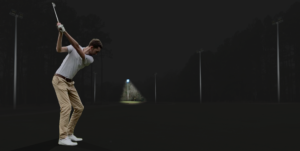Developing an athletic posture at address can improve many aspects of your game. Posture is the foundation and starting position in which we begin our swing motion. Therefore if we want to produce an athletic in-swing move we want to establish an athletic posture.
A common grievance I hear from many golfers are problems with the lower back. Its an issue all of of us would like to avoid in order to enjoy this game for as long as possible.
A weak posture will not only hinder the performance of our swing, but can bring about stress in the body and possibly lead to injury. An athletic posture can play a bog role in preserving our body.
Here I will talk about some on the influences the posture has on the golf swing and some key points to focus on when getting set-up to the ball.
Steps For an Athletic Posture
There are significant forces that occur during a golf swing. The club can, on occasions, be traveling in excess on +100mph. These forces produced can take a toll on the body, especially if the body is trying to counteract these forces throughout the swing.
Maintaining an athletic posture throughout the swing will help ensuring the body is balanced, which will increase efficiency.
>> Check out this article on Balance can Create More Power and Consistency <<
So What Can We Do in Our Set-up to Prepare Our Body?
Here I am going to run through a pre-shot routine to help get in an athletic posture, and set up position.
Spine Angle
Firstly we want to prepare and angle our spine in order to for our club to work on an efficient swing plane.
Begin by standing in a neutral upright position. From here slowly bend forward from the hips maintaining a straight back. When doing this we want to keep our hip position directly over our ankles.
You may feel as through you are about to topple forward, which is fine, just bend to where you can hold your stance.
Knee Flex
Now we are going to introduce some knee bend. The lower body is what is really going to support the upper body and relieve the pressure from the lower back. From our bend position add some knee flex feeling as though the knees are flexing over the toes.
Really feel as though the legs are anchored and supported. Maintaining with between the knees help create a wider base in which to support the upper body. Imagine if you are in a strong current of water. How would you position your lower half?
It is key to maintain the spine angle we established in the first step. This is going to produce more of a ‘squatted position’ with our body. You should feel more load/pressure in the quads and lower body. Again the hips should still be aligned over our ankles.
>> Check out this article about the Importance of the Lower Body <<
Arm Position
We should now have a good amount of space for our hands to hang vertically to the ground. This is important as it can influence in-swing motions through the ball, as well as being a big part of relieving stress from the lower back.
For instance if we took up the posture, like I’ve just mentioned, without a club. With the arms relaxed and in a perpendicular position to the ground we shouldn’t feel much tension in the lower back. Now if we slow raise our ams to a horizontal position you will likely feel the lower back starting to engage in order to counter the change in balance.
Summary
Any attempt to create power or major swing changes from a weak posture can lead to, not only alack of progress, but potential health and injury issues. Posture and set-up is the foundation to creating efficient motions.
So many of todays day-to-day activities, from gym work-outs to office ergonomics, emphasize and focus on the importance of posture. Your should treat your golf posture the same way.

